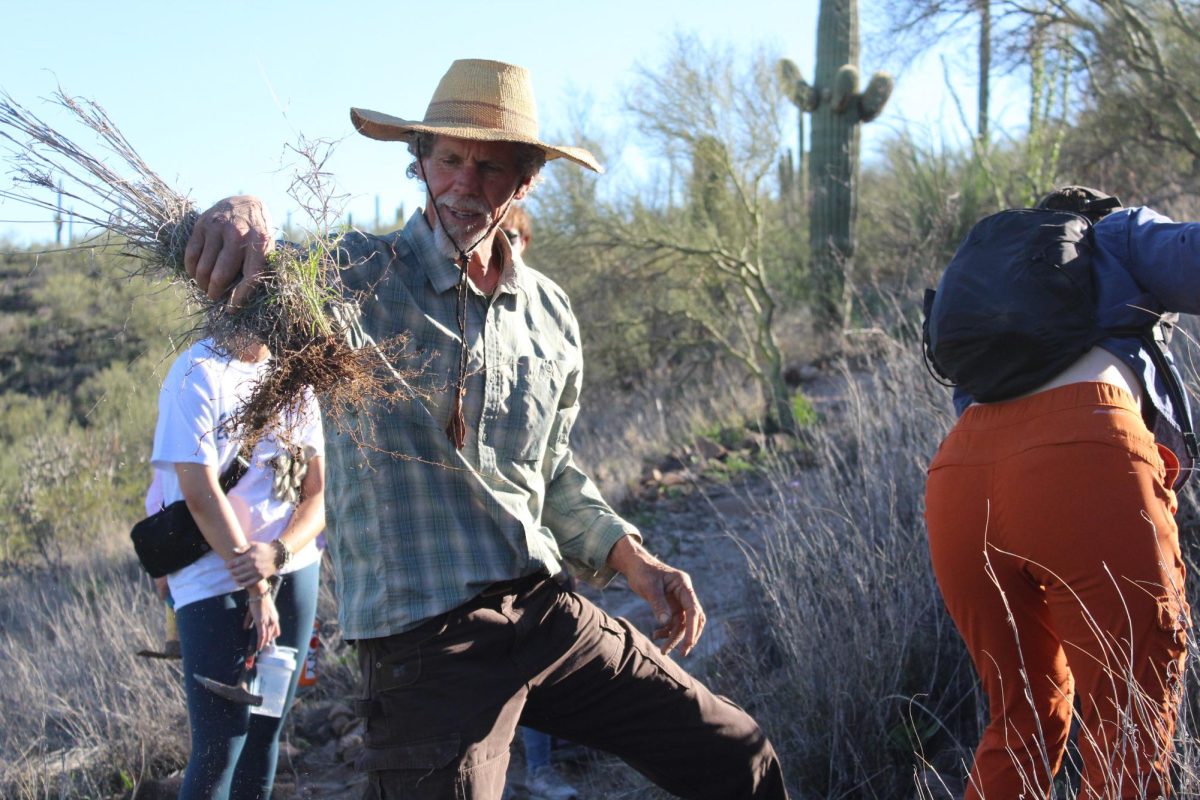It wouldn’t come as much surprise if the Arizona football team were a little hesitant to unearth game film of its 59-13 shellacking at the hands of Louisiana State in 2003.
The game was by all means an abomination, featuring three drives by the Tigers of 80 or more yards, three quarters in which LSU scored at least two touchdowns and seven instances in which the Wildcats were forced to go three-and-out.
But one statistical area Arizona needs to study closely for its rematch Saturday also came into play during the team’s three-point win over Brigham Young over the weekend: third downs.
The reason the game stayed so close despite a stellar defensive effort from the Wildcats was that the team’s offense couldn’t sustain drives.
A nice run here and a promising pass there turned into Nick Folk field goals, not to mention his punts to midfield.
That special-teams-only strategy will surely fail against the high-powered attack of the Tigers, who, by the way, went 6-of-11 on third downs in their 45-3 season-opening victory over Louisiana-Lafayette.
I’m not saying the Wildcats are anywhere near as offensively impotent as the Ragin’ Cajuns, a Sun Belt Conference team. But let’s be realistic: Arizona’s going to have to trade scores to have any hope of winning Saturday.
After the BYU game, UA head coach Mike Stoops admitted his offense looked out of sync against the Cougars but added that offensive rhythm is one of the toughest things to establish early in the season.
“”We didn’t come out and play how we wanted to,”” senior wide receiver Syndric Steptoe said after the game. “”We didn’t rush the ball the way we wanted to, we didn’t pass the ball the way we wanted to. We just got to go back this week and take the bad things out of it and try and focus on the good things.””
There was certainly more bad than good to derive from Arizona’s attack.
BYU finished with more first downs, more passing yards and a higher yards-per-play average, which is to be expected from a team that lives and dies through the air.
Yet quarterback Willie Tuitama finished with two more attempts than his counterpart, the Cougars’ John Beck, and completed eight fewer passes.
Many of those misses came on third downs when the Wildcats were backed up on their own side of the field – a result of decent punting combined with an inability by Arizona to create third-and short situations with its ground game.
“”He was so revved up to play, maybe he lost his focus a little bit,”” offensive coordinator Mike Canales said of Tuitama on Saturday. “”It happens. He’s an excitable kid. People forget he played only five games last year.
“”He’ll get better. He’ll come in and study hard, but I thought that he did some really good things too. We just got to get better as a group, and we will. No doubt.””
The question is, how much improvement can a team make in one week, especially when the game environments are going from one extreme (a raucous though supportive home crowd) to another (92,000 people hissing and cursing in unison)?
Whatever approach Arizona takes to that end, the prescription for curing its offensive woes is pretty clear.
The Wildcats must have some semblance of balance between the run and the pass – Chris Henry breaking ankles through the gap and Willie Tuitama keeping his wits about him long enough to find open receivers, especially on third and long.
Otherwise, this go-around with the Tigers will become just another forgettable, one-sided affair.
Tom Knauer is a journalism senior. He can be reached at sports@wildcat.arizona.edu.









